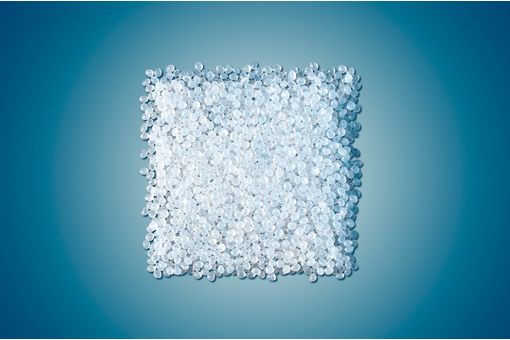Interviews
CEPA provides win-win situation for India-Japan
01 Aug '11
3 min read
The Commerce Secretary, Shri Rahul Khullar has said that India and Japan Comprehensive Economic Partnership Agreement (CEPA) is a major step in the direction of larger vision of an East Asia partnership. He was speaking after co-Charing the first meeting of Joint Committee of India Japan CEPA with Mr. Akitaka Saiki Ambassador of Japan in India. The CEPA enters into force today(01-August, 2011).
The Union Minister for Ministry of Commerce Industry and Textiles Shri Anand Sharma had said "We have no doubt in our minds that this will usher in a new era of economic engagement, which will bring development, innovation and also prosperity in both societies," when the CEPA was signed on 16th Feb, 2011 in Tokyo. Subsequently on 30th June, 2011 Diplomatic Notes were exchanged informing each side that legal procedures necessary for entry into force of the Agreement have been completed.
This is India's 3rd Comprehensive Economic Partnership Agreement (after Singapore and South Korea) and India's first with a developed country. The Agreement is most comprehensive of all the agreements concluded by India so far as it covers more than 90% of trade, a vast gamut of services, investment, IPR, customs and other trade-related issues. Under the India- Japan CEPA only 17.4% of the tariff-lines have been offered for immediate reduction of tariff to zero % by India. Tariffs will be brought to zero in 10 years on 66.32% of tariff lines to give sufficient time to industry to adjust to the trade liberalization.
The Japanese side has put 87% of its tariff lines under immediate reduction of tariff to zero. A large number of these items are of India's export interest e.g. seafood, agricultural products such as mangoes, citrus fruits, spices, instant tea, most spirits such as rum, whiskies, vodka etc, textile products such as woven fabrics, yarns, synthetic yarn, readymade garments, petro chemical &chemicals products, cement, jewellery, etc.
The exclusion list of Japan (where no tariff concessions are proposed) mainly consists of items such as rice, wheat, oil, milk, sugar, leather and leather products. The trade volume of items in the Japanese exclusion list is only 2.93%.
India's exclusion list contains 1538(13.62%) lines at the 8 digit level. Auto parts and agricultural and other sensitive items have been kept out of the liberalization schedule.
Under India-Japan CEPA the Japanese government shall accord no less favourable treatment to the applications of Indian companies than that it accords to the like applications of its own persons for drug registration. This will greatly help Indian pharmaceutical companies.
Under India-Japan CEPA, Indian professionals will be able to provide their services and contribute towards further development of Japan's IT Sector. Japanese side has also agreed to conclude Social Security Agreement within a specified period (3 years). Contractual Service Suppliers (CSS), Independent Professionals (IPs) such as Accounting, R& D Services, Tourist Guide, Market Research; and Management Consulting firms now can provide services in Japan.
The Union Minister for Ministry of Commerce Industry and Textiles Shri Anand Sharma had said "We have no doubt in our minds that this will usher in a new era of economic engagement, which will bring development, innovation and also prosperity in both societies," when the CEPA was signed on 16th Feb, 2011 in Tokyo. Subsequently on 30th June, 2011 Diplomatic Notes were exchanged informing each side that legal procedures necessary for entry into force of the Agreement have been completed.
This is India's 3rd Comprehensive Economic Partnership Agreement (after Singapore and South Korea) and India's first with a developed country. The Agreement is most comprehensive of all the agreements concluded by India so far as it covers more than 90% of trade, a vast gamut of services, investment, IPR, customs and other trade-related issues. Under the India- Japan CEPA only 17.4% of the tariff-lines have been offered for immediate reduction of tariff to zero % by India. Tariffs will be brought to zero in 10 years on 66.32% of tariff lines to give sufficient time to industry to adjust to the trade liberalization.
The Japanese side has put 87% of its tariff lines under immediate reduction of tariff to zero. A large number of these items are of India's export interest e.g. seafood, agricultural products such as mangoes, citrus fruits, spices, instant tea, most spirits such as rum, whiskies, vodka etc, textile products such as woven fabrics, yarns, synthetic yarn, readymade garments, petro chemical &chemicals products, cement, jewellery, etc.
The exclusion list of Japan (where no tariff concessions are proposed) mainly consists of items such as rice, wheat, oil, milk, sugar, leather and leather products. The trade volume of items in the Japanese exclusion list is only 2.93%.
India's exclusion list contains 1538(13.62%) lines at the 8 digit level. Auto parts and agricultural and other sensitive items have been kept out of the liberalization schedule.
Under India-Japan CEPA the Japanese government shall accord no less favourable treatment to the applications of Indian companies than that it accords to the like applications of its own persons for drug registration. This will greatly help Indian pharmaceutical companies.
Under India-Japan CEPA, Indian professionals will be able to provide their services and contribute towards further development of Japan's IT Sector. Japanese side has also agreed to conclude Social Security Agreement within a specified period (3 years). Contractual Service Suppliers (CSS), Independent Professionals (IPs) such as Accounting, R& D Services, Tourist Guide, Market Research; and Management Consulting firms now can provide services in Japan.
Popular News
Leave your Comments
Editor’s Pick
































-Ltd..jpg?tr=w-120,h-60,c-at_max,cm-pad_resize,bg-ffffff)





.jpg?tr=w-120,h-60,c-at_max,cm-pad_resize,bg-ffffff)
.jpg?tr=w-120,h-60,c-at_max,cm-pad_resize,bg-ffffff)






